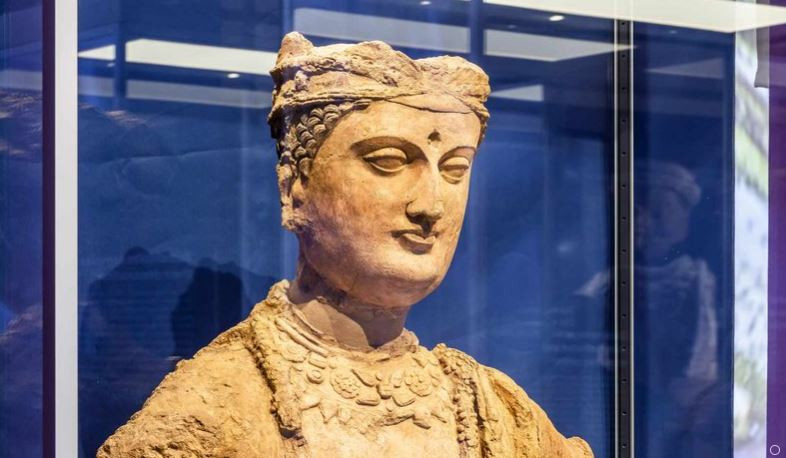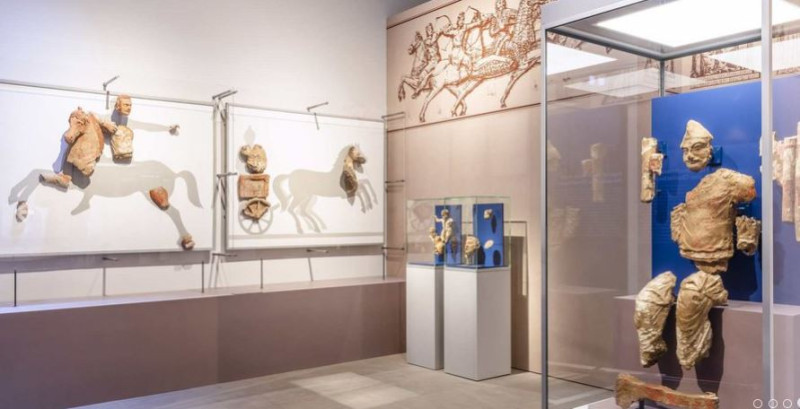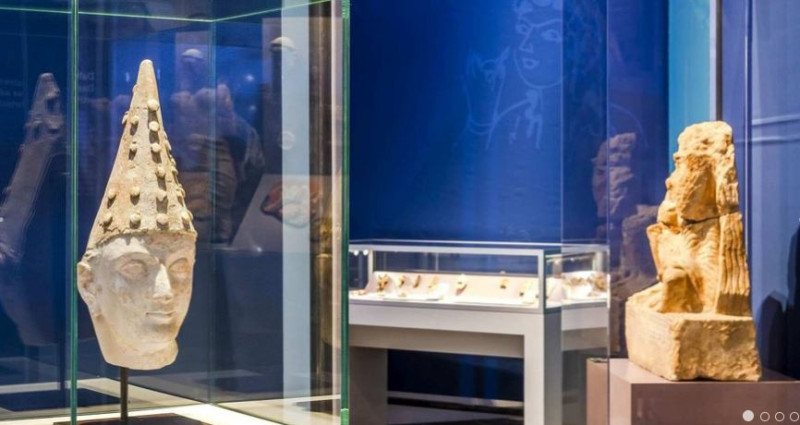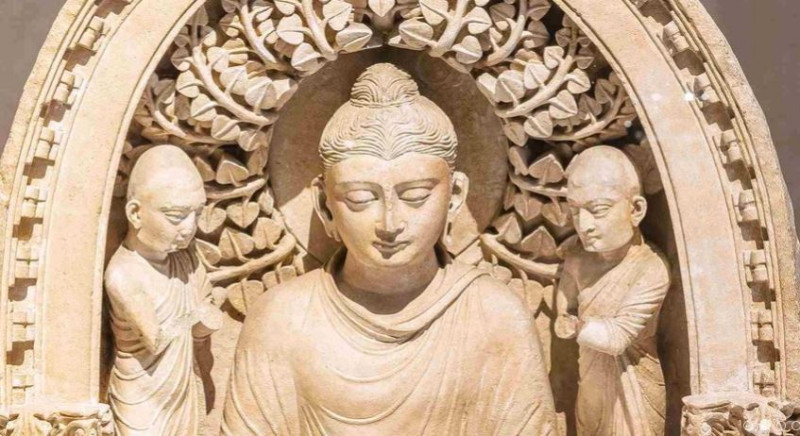Vases of Greek style, coins with names of local kings in Greek, a bather sample of Greek way of life, Buddha statues based on Hellenistic models are just some of the archaeological findings
It took Alexander the Great almost three years of extremely violent battles against unknown peoples in Bactria (present-day Samarkand, Bukhara, Uzbekistan and Sughd provinces of Tajikistan) and Sogdia (present-day Tajikistan, Uzbekistan, Afghanistan, Turkmenistan) before he marched into India.
Valuable archaeological finds from these unknown kingdoms that show the “passage” of the Greek soldier through the region are exhibited on “Museum Island” in Berlin.
Vases of Greek style, coins with the names of local kings in Greek, a bather a sample of the Greek way of life, Buddha statues based on Hellenistic models are just some of the archaeological findings that are presented – in part for the first time in the West – in the exhibition “Archaeological Treasures from Uzbekistan – From M. Alexander to the Kingdom of Kossan” .
Outstanding examples of art from the “Hellenic Kingdom of Bactria” and the rather unknown “Kingdom of Kossana” are also on display.
By 328 BC much of Central Asia had been conquered by the great soldier. By placing it under his control, he opened its gates wide for Greek civilization to “invade”. The meeting and mixing of Greek and Eastern traditions culturally shaped these areas for centuries.
The story through the finds
The first part of the exhibition focuses on the campaigns of M. Alexander and the most recent archaeological findings of the Kurgansol and Uzundara fortifications in southeastern Uzbekistan.
The archaeological excavations of the last twenty years have proved that Alexander erected forts on the river Oxus (today’s Amu Darya), to secure his conquests. The 13,500 soldiers he stationed there became the catalysts for the spread of Greek culture. After his death in 323 BC his empire was divided among the Successors. However, around the middle of the 3rd century BC, the Bactrian satrap Diodotus I Sotir broke away from the Seleucid kingdom and established – in the present-day lands of northern Afghanistan, Tajikistan and southern Uzbekistan – the “Greek Kingdom of Bactria».
The wooden facilities of the Kurgansol fortress were burned by raiders, but the Greeks left their mark. In 2008, many fragments were found there which refer to forms of Greek vases and the unique until now, and of particular archaeological importance, an elegant clay bath, which was even connected to a water supply network. This is an impressive proof of the cultivation of the lifestyle of the Greeks thousands of kilometers away from their place of origin, since they continued to enjoy a good bath there as well, something unusual for the previous conquerors of the area, the Persians.
The Uzudara mountain fortress has been excavated since 2013 and is believed to have been built a few years after the death of M. Alexander, since none of the numerous coins found are older than 310 BC. It was used not only during Seleucid times but also throughout the period of the hundred-year “Hellenic Kingdom of Bactria”.
Its architecture, with its many frontal towers, also has Greek and not Persian standards. His garrison continued to need fish dishes from the nearby river and other household utensils, the forms of which also refer to Greek tradition.
But also the coins with the figures of Greek rulers, the weapons, the vessels of daily use with Greek letters found in the city of Kabir Tepe in northern Bactria, possibly Alexandria Oceania, also document the Greek cultural presence in Uzbekistan and Central Asia in general .
Among the top exhibits in the second exhibition section are some works of art from “Kingdom of Kossan“, cultural heir of the Greeks in the region. In the 1st century AD the Kossans moved from their pastures near the Great Wall as far west as Gandhara – in present-day Pakistan – and at the height of their power under King Kanishka (c. 127-153 BC) stretched from southeastern Uzbekistan to India.
Following Greek standards, they minted gold, silver and copper coins with Greek inscriptions depicting rulers and Greek deities.
Even after their decline, the so-called Gandhara civilization continued to culturally co-shape large parts of the region. By the 1st century AD Buddhism was now one of the major religions in Gandhara and Bactria. Some of the largest sculptures of Buddhist deities and monks survive as well as wall paintings of exceptional quality. In the exhibition it is not difficult to recognize the Greek models of impressive early Buddhist art.
In fact, artists with Hellenistic influences contributed to the development of many of the types of Buddha depictions that are so familiar to us today. The Buddha, who had never been depicted until then, was given human form for the first time, modeled after Apollo with curly hair and an imitation tunic.
Also, numerous decorative elements were adopted from the Hellenistic world, such as tendrils of vines and garlands of plants, sometimes carried by oroides. The scenes in the reliefs and friezes of temples and Buddhist monasteries were separated by Corinthian columns. In the monastery of Kara Tepe in Bactriani, the capital of a Corinthian column was even found, which proves that Hellenistic standards were also used in architecture. These impressive exhibits are juxtaposed with works by the Berlin Museum of Asian Art from Gandhara, whose origins can be traced back to the trove of motifs in Greek mythology and the world of early Buddhist iconography.
For the first time, excellent quality terracotta portraits from the 1st century BC are also being exhibited in Europe. They were found in the Khalchayan palace complex of Bactria (southern Uzbekistan) and are another tangible example of the mixing of cultures. Both the realistic features of the faces and the columns on which the central hall rests have a clearly Hellenistic influence.
Parts of gold treasure, total weight 36 kg, consisting of bars, jewels and other small objects are also on display. It was found in Dalverzidepe, southern Uzbekistan. The simple fort on the borders of the Greek Kingdom of Bactria developed into an important urban center of the kingdom of Kossana. Proof of enormous economic power is this treasure.
Source :Skai
I am Frederick Tuttle, who works in 247 News Agency as an author and mostly cover entertainment news. I have worked in this industry for 10 years and have gained a lot of experience. I am a very hard worker and always strive to get the best out of my work. I am also very passionate about my work and always try to keep up with the latest news and trends.














